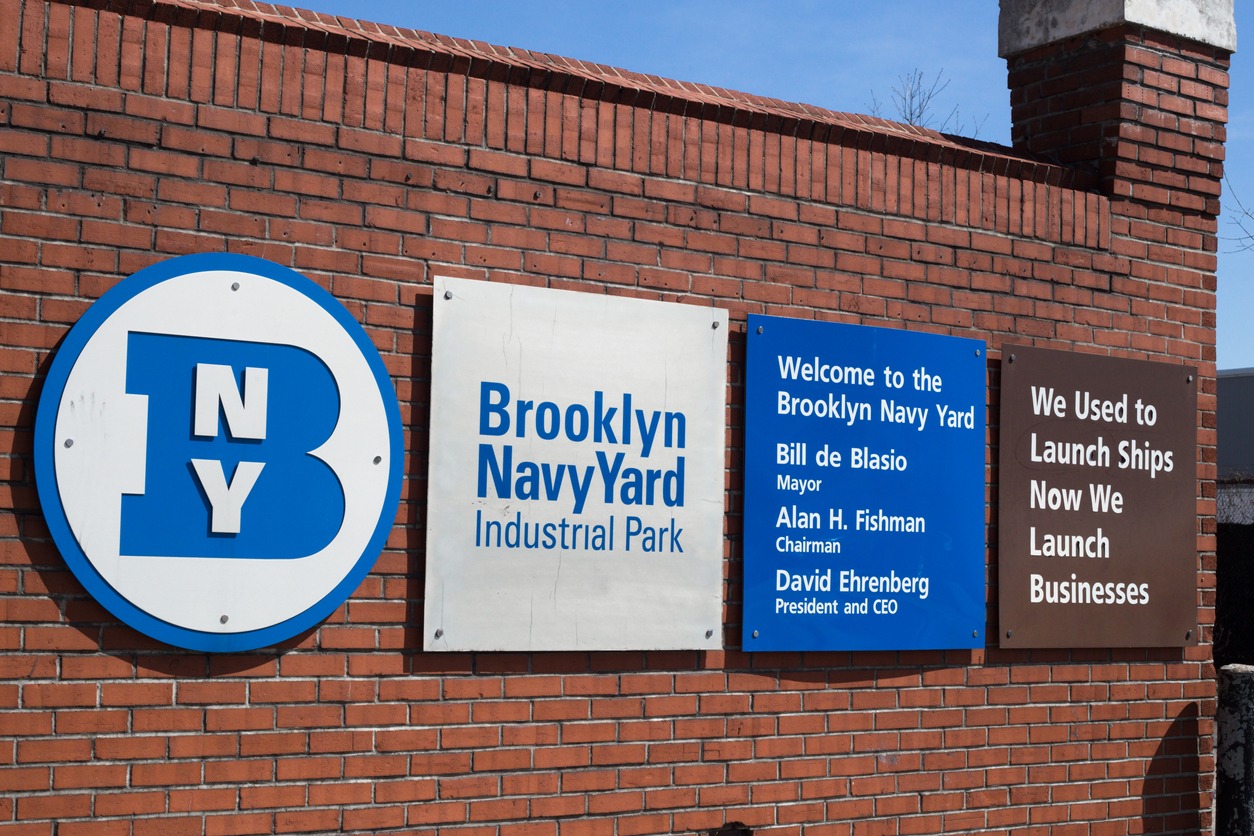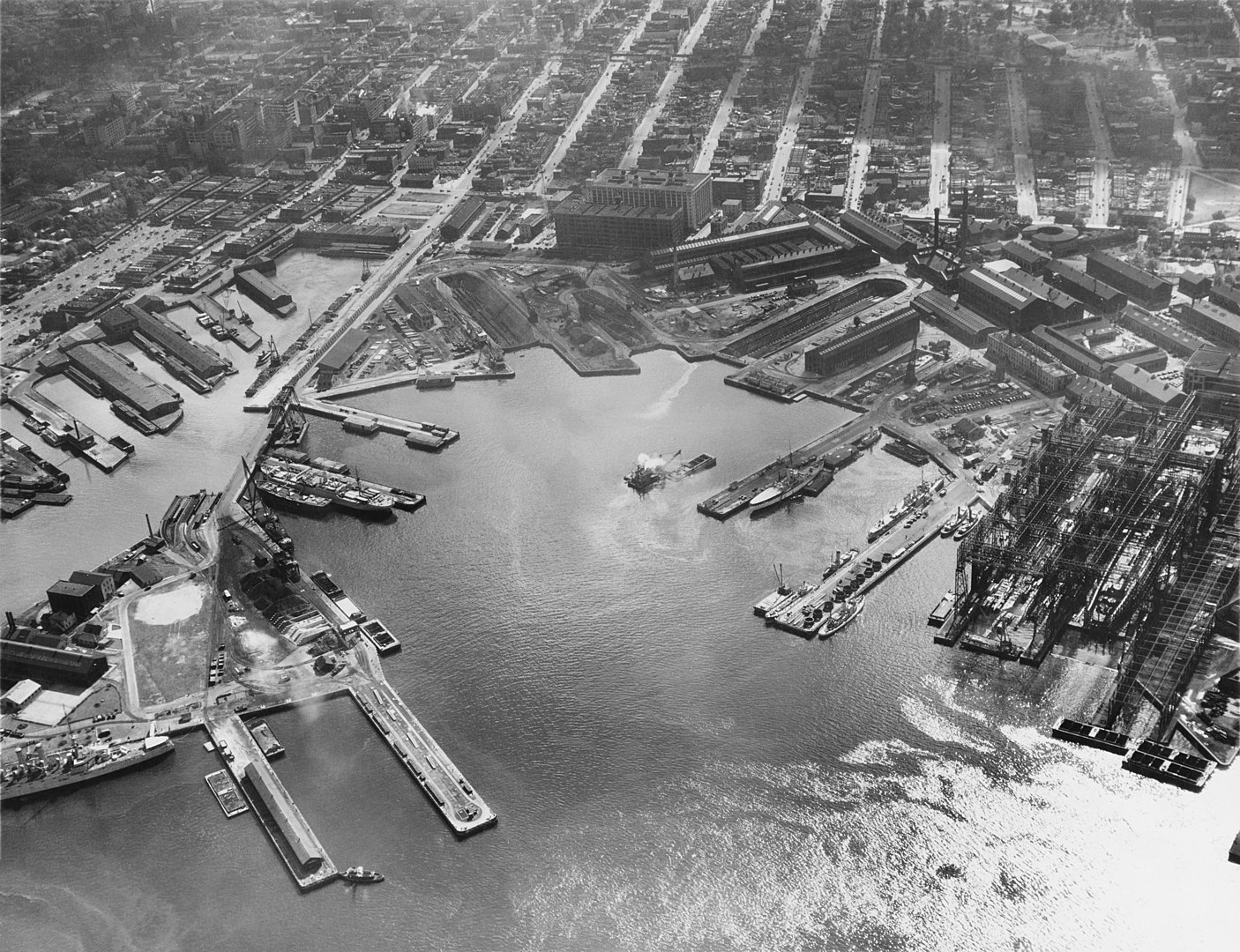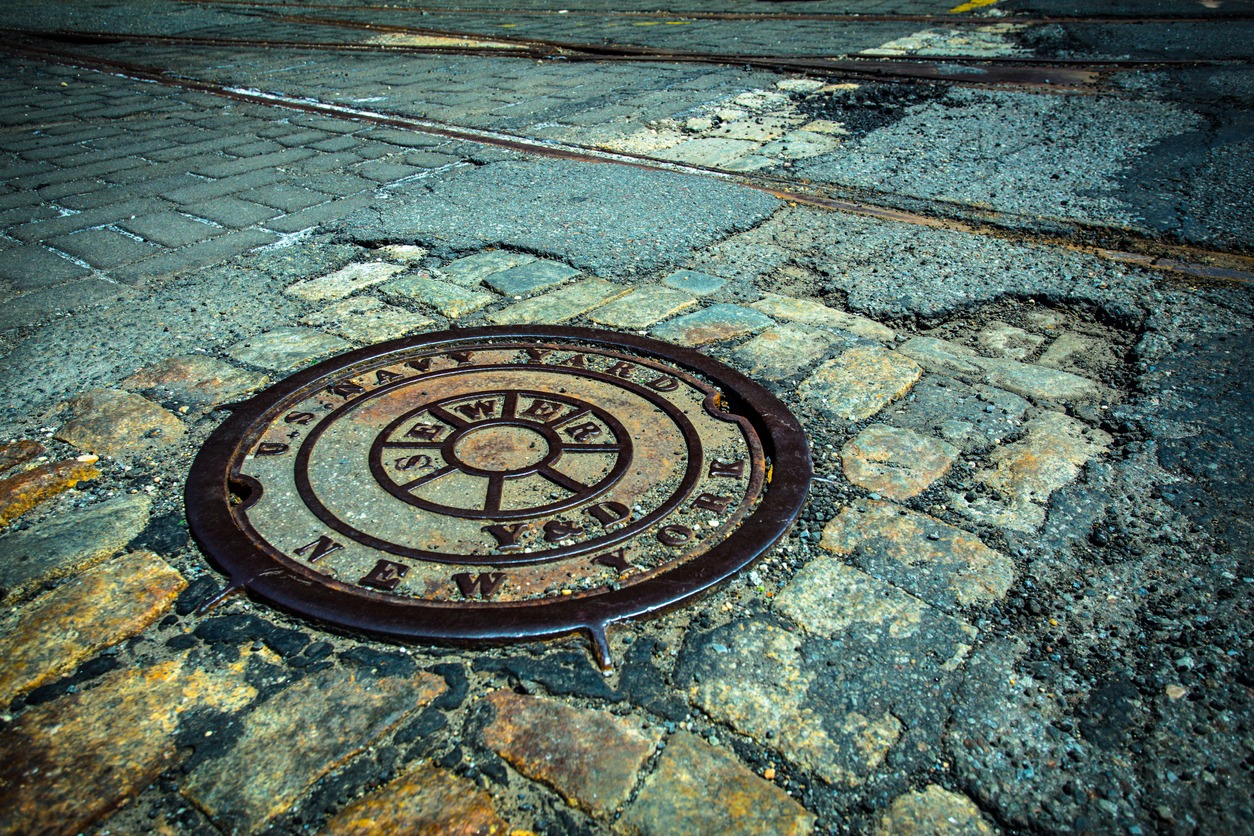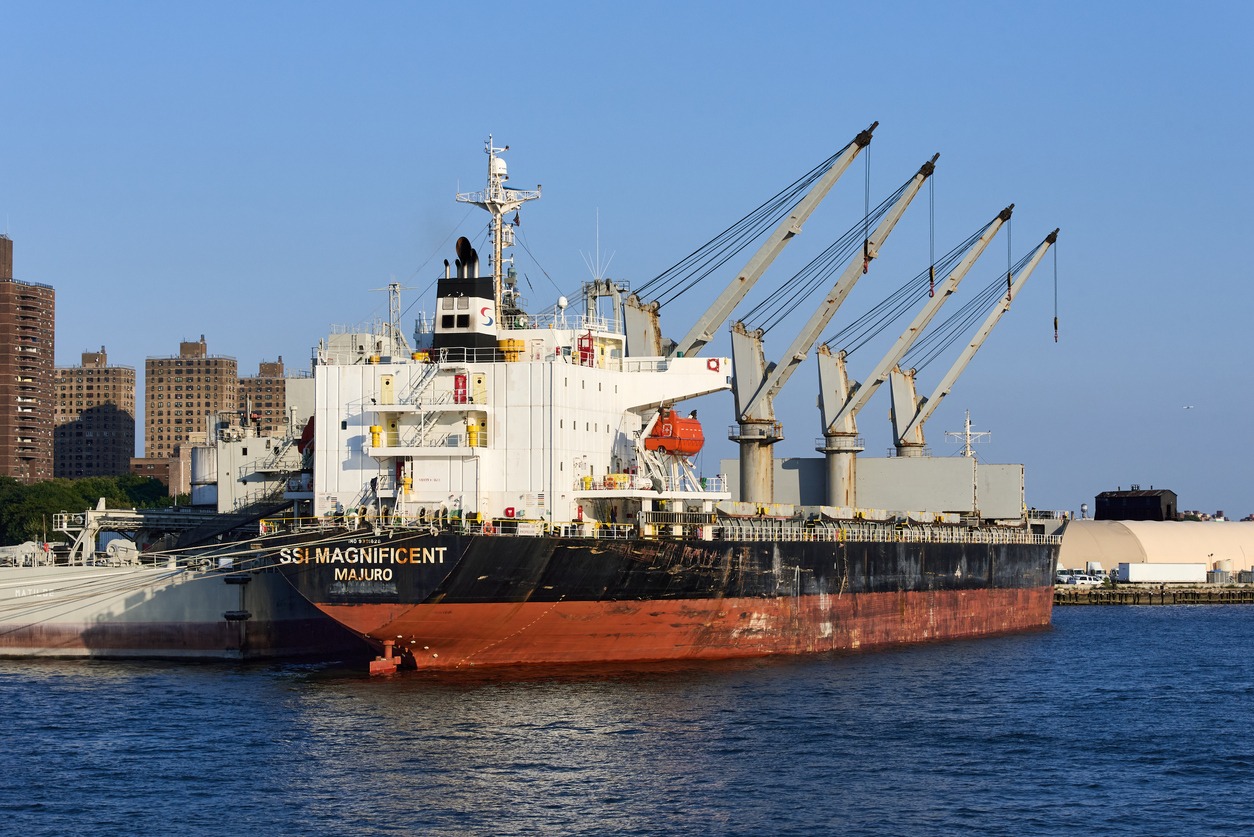Located on the banks of the East River, in the bustling heart of Brooklyn, there’s a unique fusion of history, industry, and art – the Brooklyn Navy Yard. This location, once renowned for its naval shipbuilding prowess, has undergone a striking transformation. It now stands as a bustling hub for artistic and industrial advancement. Our exploration in this article will take us through the fascinating evolution of the Brooklyn Navy Yard. We’ll trace its journey from a cornerstone of naval history to its reinvention as a vibrant haven for artists and industrial visionaries.
A Legacy of Naval Excellence
The narrative of the Brooklyn Navy Yard, a landmark of American naval prowess, commenced in 1801. It was originally founded as a premier shipbuilding and maintenance complex for the United States Navy. Spanning over a century, this facility was at the forefront of naval engineering and innovation, contributing significantly to the country’s maritime dominance. The Brooklyn Navy Yard’s impact on American naval history is profound and multifaceted. It was here that some of the most iconic and influential warships were constructed, vessels that would play pivotal roles in shaping the nation’s military and historical landscape. Among these were the USS Maine and the USS Arizona, two ships whose stories are etched deeply into the annals of U.S. history.
The USS Maine, famously remembered for its tragic sinking in Havana Harbor, was a catalyst for the Spanish-American War. This incident marked a significant turn not only in the Yard’s history but also in the narrative of American foreign policy and military engagement. Similarly, the USS Arizona, which met its fate during the infamous attack on Pearl Harbor, further underscores the Yard’s connection to critical moments in U.S. history. These events not only highlight the strategic importance of the Navy Yard in warship production but also its symbolic role in the broader context of American history.
The Brooklyn Navy Yard, through its long-standing tradition of shipbuilding excellence, has been more than a mere naval facility. It has been a witness and contributor to pivotal historical events, leaving an indelible mark on the legacy of American naval warfare and history.
The Decline and Revival
The latter half of the 20th century marked a period of significant change for naval shipyards across the United States. As the demand for maritime vessels gradually diminished, the Brooklyn Navy Yard, once a bustling hub of naval shipbuilding, faced an inevitable decline. Its closure in 1966 was not just the end of an era of shipbuilding excellence; it also left a profound impact on the local community, creating a void in both the economic landscape and the collective identity of the area. The sprawling complex, which had been a cornerstone of industrial activity and employment, suddenly stood as a silent testament to a bygone era. The closure raised pressing questions about the future of this vast industrial site. There was a palpable need to repurpose the space in a way that respected its rich history while also addressing contemporary economic and social needs.
In the 1980s, a transformative vision began to emerge. Local organizations, city planners, and community advocates recognized the untapped potential of the Brooklyn Navy Yard. They envisioned it not as a relic of the past but as a fertile ground for economic rejuvenation and innovation. This vision was driven by the desire to create jobs, stimulate economic growth, and foster a new era of industrial and creative innovation. The journey of reinvention for the Brooklyn Navy Yard was ambitious and forward-thinking. It involved reimagining the space to accommodate a diverse mix of businesses, from manufacturing and industrial workshops to creative studios and tech firms. This transformation was not just about physical redevelopment; it was about reviving the spirit of the Navy Yard as a center of productivity and ingenuity.
Through concerted efforts, the once-dormant shipyard gradually began to evolve into a vibrant, modern industrial complex. A focus on sustainability, community engagement, and economic opportunity marks this new phase in the Yard’s history. It stands today as a symbol of successful urban industrial revitalization, blending its historical roots with a new identity as a cradle of modern industry and innovation. The Brooklyn Navy Yard’s story of decline and revival is a testament to the resilience and adaptability of urban spaces. It highlights how historical sites, when reimagined with vision and purpose, can continue to play a significant role in the fabric of a community and a city.
The New Era of the Brooklyn Navy Yard
The transformation of the Brooklyn Navy Yard from a naval shipbuilding facility to a vibrant industrial and creative hub is a remarkable story of urban redevelopment. Embracing the spirit of innovation and creativity, the Yard has successfully transitioned into a bustling center for a diverse array of industries. Today, it is a beacon of modern industrial revitalization, hosting over 400 businesses spanning a wide spectrum from cutting-edge manufacturing and technology startups to film and television production studios. This dynamic mix has turned the Yard into a magnet for entrepreneurs, innovators, and artists, all drawn to its unique environment.
At the heart of the Yard’s rebirth is the New Lab, an emblematic example of how the Brooklyn Navy Yard fosters innovation. The New Lab is a state-of-the-art facility that provides a collaborative workspace for companies at the cutting edge of technology. It’s a place where startups and established firms come together in a shared mission to push the frontiers of science and technology. The environment at New Lab is conducive to groundbreaking work in fields like robotics, artificial intelligence, and sustainable design. This collaborative approach not only drives technological advancements but also creates a thriving community of innovators.
The presence of the New Lab and similar enterprises within the Brooklyn Navy Yard signifies a major shift in the site’s role in the city’s economy and culture. Instead of ships, the Yard now produces innovative ideas, products, and art. It’s a transformation that speaks to the adaptability and resilience of urban spaces. The Yard has become a model for repurposing historic industrial sites into centers of modern industry and creativity.
This evolution from ships to shops, from a naval base to a hub of innovation, is a testament to the vision and effort that went into reimagining the Brooklyn Navy Yard. It represents a successful melding of history with the future, where the legacy of the past serves as a foundation for new growth and discovery. The Brooklyn Navy Yard’s journey from a shipyard to a thriving center of technology and art symbolizes the potential for urban spaces to evolve and adapt, contributing to the economic and cultural vitality of the city.
Brooklyn Navy Yard’s Renaissance of Artistic Expression
The Brooklyn Navy Yard’s evolution into a cultural hub is as striking as its industrial resurgence. Alongside its technological and manufacturing achievements, the Yard has also emerged as a fertile ground for artistic and cultural expression. This transformation has turned the Yard into a canvas for creativity, where the rich tapestry of New York’s artistic community comes to life.
In the spaces where naval engineers once designed and built mighty ships, a vibrant community of artists and artisans now thrives. The repurposed buildings of the Navy Yard have been transformed into bustling studios and galleries, each telling its own unique story through art. These spaces are not just workplaces for artists; they are incubators of creative thought and expression, blending the Yard’s historical essence with contemporary artistic vision. Visitors to the Brooklyn Navy Yard are treated to an eclectic array of artistic creations. The Yard is a living gallery, showcasing everything from large-scale sculptures and intricate paintings to innovative multimedia installations. This diversity reflects the Yard’s inclusive ethos, providing a platform for artists from various backgrounds and disciplines to showcase their work.
A focal point of this artistic revival is the Brooklyn Navy Yard Center at BLDG 92. This institution embodies the spirit of the Yard’s transformation. It’s a place where history and the future converge, offering insights into the Yard’s past while also highlighting its current role as a hub of innovation and creativity. BLDG 92’s exhibitions, tours, and educational programs celebrate the Yard’s rich history and inspire visitors and future generations to engage with and contribute to its evolving narrative.
The arts at the Brooklyn Navy Yard represent more than just aesthetic beauty; they symbolize the resilience and adaptability of a space that has continually reinvented itself. The Yard’s journey from a naval powerhouse to an artistic sanctuary demonstrates the power of creative repurposing. It stands as a testament to the idea that industrial spaces can be reimagined to foster artistic exploration and cultural enrichment, contributing significantly to the urban cultural landscape.
Sustainability and the Future
As the Brooklyn Navy Yard steps into the future, it does so with a keen focus on sustainability, weaving ecological consciousness into the fabric of its innovation and art. This historic site, once a symbol of industrial might, is now at the forefront of sustainable urban development, showcasing how industry and ecology can not only coexist but also complement each other. The Yard’s commitment to sustainability is evident in various aspects of its redevelopment and operations. One of the most visible green initiatives is the implementation of green roofs across its buildings. These living roofs do more than just beautify the urban landscape; they also play a crucial role in reducing the urban heat island effect, managing stormwater, and providing habitats for local wildlife.
Renewable energy projects are another cornerstone of the Yard’s sustainability efforts. Solar panels and wind turbines dot the landscape, serving as a testament to the Yard’s dedication to reducing its carbon footprint and promoting renewable energy sources. These initiatives not only contribute to the fight against climate change but also demonstrate the practicality and effectiveness of sustainable energy solutions in an urban setting. Moreover, the Yard’s buildings themselves are a showcase of sustainable design. Many structures within the complex have been retrofitted or built with sustainability in mind, featuring energy-efficient systems, sustainable materials, and designs that maximize natural light and airflow. These buildings are not just workplaces; they are examples of how modern urban architecture can minimize environmental impact while still providing functional and aesthetically pleasing spaces.
Beyond these tangible initiatives, the Brooklyn Navy Yard also serves as a model for sustainable urban planning. It challenges the conventional notion that industrial development is at odds with ecological preservation. By integrating green practices into its very foundation, the Yard demonstrates that industrial areas can be transformed into spaces that support both economic growth and environmental stewardship.
As the Brooklyn Navy Yard continues to evolve, its commitment to sustainability positions it as a leader in eco-friendly urban development. It stands as a beacon for cities around the world, showing that the future of urban spaces lies in a balanced approach that values innovation, art, and, importantly, the health of our planet. This approach enriches the present and ensures a livable, thriving environment for future generations.
Conclusion
The Brooklyn Navy Yard’s journey from a historic shipyard to an art and industrial oasis is a testament to the resilience and adaptability of both place and people. It has reinvented itself, preserving its rich history while embracing the future with open arms. Today, the Yard stands as a symbol of Brooklyn’s enduring spirit, where innovation, creativity, and sustainability thrive amidst the echoes of its naval past. As we explore its vibrant present, we can’t help but wonder what new chapters in its remarkable story lie ahead. The Brooklyn Navy Yard is not just a historic site; it’s a living, breathing testament to the power of transformation and the boundless possibilities of human endeavor.




